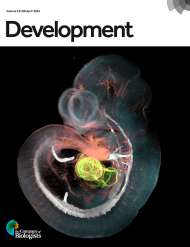29 April 2025
Some contributors to the carbon footprint such as energy use, business travel and ventilation may be more obvious to researchers. What is often less understood in a lab is the direct and indirect impacts of the materials used to conduct research. Using high grade materials requires a lot of different resources.
This is often well-exemplified in lab waste management. Since waste often consists of chemically or biologically contaminated materials, it needs to be treated carefully. However, waste disposal often feels like magic. During the day, researchers use consumables, dispose of the packaging, use the product once and discard it. Some people go to the recycle bin in the corridor and they sort the waste accordingly. The next morning the bins are empty again and nobody seems to know where the content has gone, then the process starts all over again.
One way of breaking this linear way of using materials is to visualise the impact of the entire life cycle of the material. Several institute-wide approaches challenge the norm (e.g., Wageningen University and universities in The Netherlands) and quantify the huge number of resources that are shipped to university campuses and then labelled as waste after one-time use. Also, companies, such as Merck, are more willing to provide information about their products and this can also be incorporated into the calculations. If not available via the company, doing a waste analysis can help to monitor your status quo. Many initiatives like green labs Austria have focused on analysing the plastic use in labs. This approach has been eye opening for understanding the different types of product usage and to find ways to reduce and recycle.
Currently, most modern labs in the Global North view water as an unlimited resource, but this could change in the future. Many technical solutions exist to reduce the volume of water used to autoclave and to make ultra-pure water, but these are still not standardly applied because the price of water is often relatively cheap. Combining these technical solutions with behavioural changes could help to avoid the further increase of water use and to help protect this resource.
One other great example of a resource that needs to be used responsibly is helium. Helium is often used to cool down machines like NMRs to very low temperatures. In 2012, helium stock was significantly reduced and now it is more difficult to source. Helium recovery systems were rapidly developed and implemented because of the rising price. Currently, you can only source new helium if a recovery system is in place. This scarcity drove innovation and implementation in only 10 years and is a good example of how quick change is possible. Creating a more circular model for many resources should be the default situation and we should use our ingenuity and influence to make this a reality. This would automatically result in a reduction of our environmental footprint.
In the next post, I will analyse how teaching can help inspire researchers to act more sustainably in labs. In previous posts, I discuss the role of energy, equipment and procurement in lab sustainability, and what is the overall environmental impact of academia.







